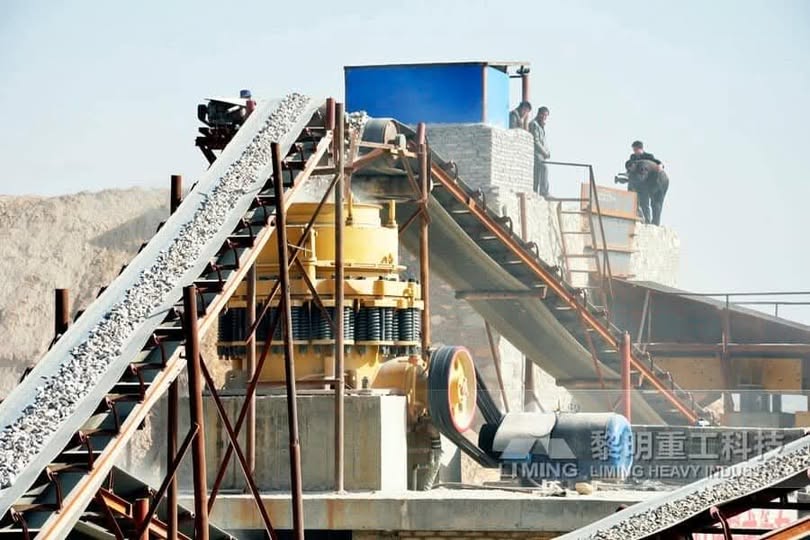Cone Crushers: The Core of Brazil’s Iron Ore Crushing Lines
Brazil stands as a global powerhouse in the mining industry, with its vast reserves of iron ore being a cornerstone of the world’s steel production. To maintain this position, the Brazilian mining industry relies on cutting-edge and highly efficient equipment. At the heart of a modern iron ore crushing line, the cone crusher plays a pivotal and indispensable role.
This article details the critical importance and key advantages of using a cone crusher for iron ore in Brazil’s demanding and high-volume operations.

The Brazilian Iron Ore Context
Brazilian iron ore is known for its high quality and density. The sheer scale of mining operations across the country requires crushing plants that can handle enormous capacities with unwavering reliability. Iron ore is a hard and dense material that necessitates a robust secondary crushing solution capable of withstanding continuous, heavy-duty work. The cone crusher is perfectly designed for this task.
Why the Cone Crusher is Ideal for Iron Ore
The cone crusher operates on the principle of compression, which is highly effective for processing hard, abrasive, and dense materials. While a jaw crusher handles the primary crushing of large chunks, the cone crusher is essential for the next stages.
- High Capacity and Efficiency: Modern cone crushers are engineered for high throughput, making them ideal for the scale of an iron ore crushing line in Brazil. Their design ensures a continuous flow of material, maximizing production rates.
- Superior Durability: Built with heavy-duty components and a robust design, cone crushers are highly resistant to the wear and tear caused by abrasive materials like iron ore. This durability translates to extended component life and reduced maintenance costs.
- Consistent Product Quality: A key advantage of the cone crusher is its ability to produce a consistently sized, well-shaped product. The final output from a cone crusher for iron ore is often cubical, which is highly valued for specific downstream processes and applications.
- Flexibility and Control: Advanced hydraulic systems allow operators to easily adjust the crusher’s settings, enabling on-the-fly modifications to the output size to meet different market specifications without interrupting the production flow.
The Cone Crusher’s Place in the Crushing Line
A typical iron ore crushing line in Brazil is a multi-stage process where each machine plays a specific role. The cone crusher is strategically placed after the primary crusher and before the screening stage.
- Primary Crushing: Large pieces of raw iron ore are fed into a jaw crusher, which breaks them down into smaller, manageable sizes.
- Secondary Crushing: The output from the jaw crusher is then fed into one or more cone crushers. This is where the bulk of the size reduction occurs, bringing the material down to the final product specifications.
- Screening: The crushed material is then sorted into different size fractions by a screening plant, ready for stockpiling or transport.
The efficiency of the cone crusher in this circuit directly impacts the overall plant’s performance and profitability.
Conclusion
The cone crusher is far more than just a piece of mining equipment; it is the strategic heart of any high-capacity iron ore crushing line in Brazil. Its ability to combine high throughput, superior durability, and precise control makes it the most reliable solution for processing this demanding material. For companies operating in the Brazilian mining industry, investing in a top-tier cone crusher is a crucial step toward maximizing output, reducing operational costs, and securing a competitive edge in the global market.
- > The Application of Impact Crushers in the Mining Industry
- > Advanced Crushing Solutions: Vertical Shaft Impact Crushers in South Africa
- > The Significance of Gyratory Cone Crushers: Key Advantages in Crushing Operations
- > How to Reduce Jaw Plate Wear in Jaw Crushers: Causes and Solutions
- > Price Range and Influencing Factors of Mobile Impact Crushers for Mining
- > Mobile Crusher in Gypsum Crushing Process: Enhancing Efficiency and Flexibility
- > Mobile Vibrating Screens for Sand Processing in Malaysia
- > Jaw Crusher Troubleshooting: Common Faults and Effective Solutions
Hot Product


Online




Message
